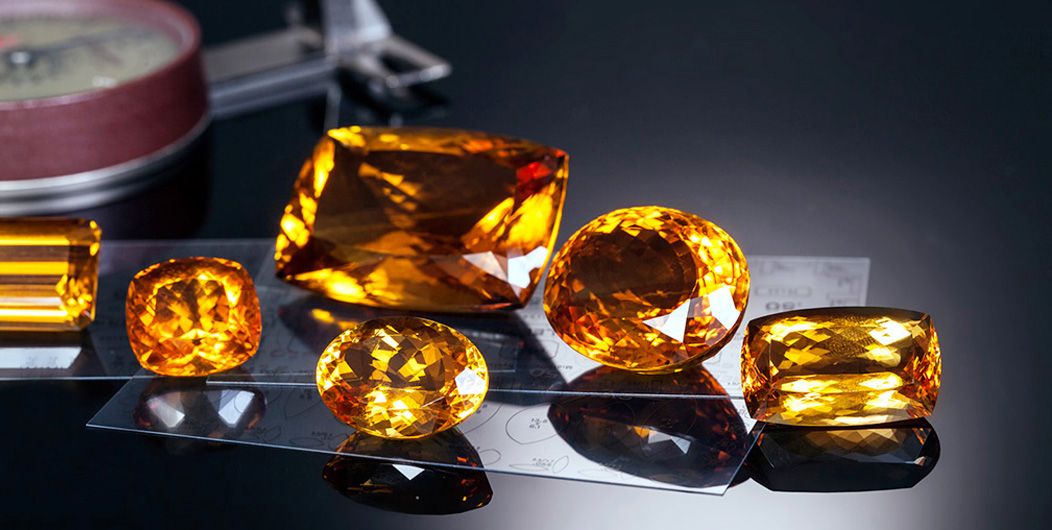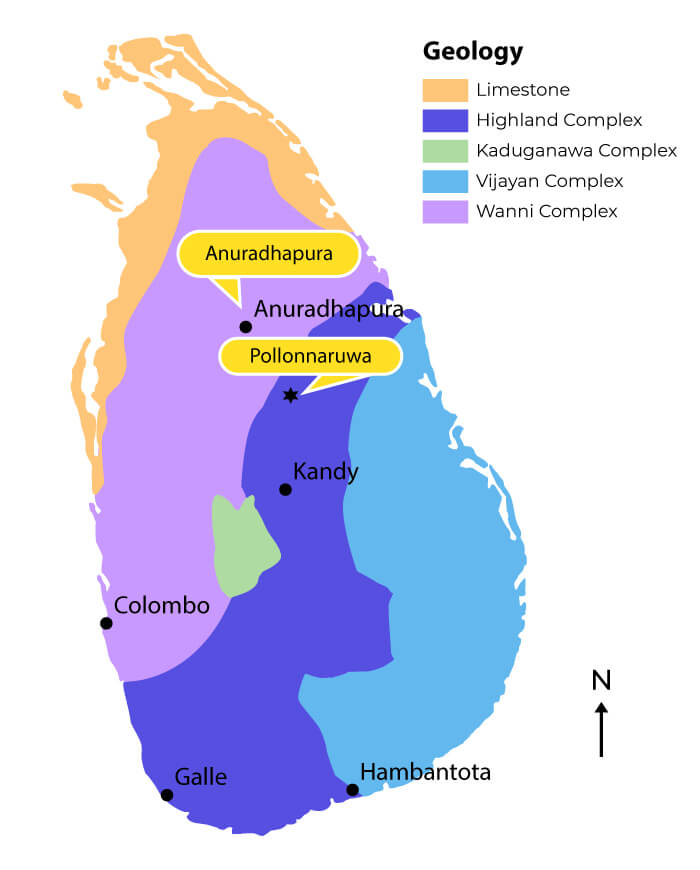
Sri Lanka has a long traditional association with the global gem and jewellery trade and has been known as the cradle of treasures for its precious, natural gemstones.
The art of jewellery making and Sri Lanka’s gem industry have been widely acclaimed in literary works dating as far back as 250 B.C. Legend has it that King Solomon, wooed Queen Sheba with gifts of priceless Sri Lankan gems and that throughout the ages Sri Lankan gems have adorned crowns and thrones and bedecked royalty the world over, including more recently, Queen Victoria, Princess Diana of Britain and the Duchess of Cambridge.
Sri Lanka is currently positioned in the global market as a source of high-quality gems and is reputed to be a quality cutting & finishing centre in the world producing stones that meet the highest industry standard.
Since historic times, the Sri Lankan jewellery manufacturing industry has developed considerably and today Sri Lanka has both the traditional jewellery industry and export-oriented industry ready to supply to the international market. Sri Lanka is also well known for diamond cutting skills where quality is a pre‐requisite. The Sri Lankan lapidaries specialize in cutting and polishing small diamonds with exceptionally high Quality.
There are around 300 exporters of gems, diamond and jewellery which fall under the categories of large, medium and small. Most of the exporters are SMEs that are scattered across the country. The business value chain of Sri Lanka’s gem and jewellery industry include;
The entire industry of gem, jewellery and diamond faceting employs around 650,000 persons including miners, cutters and polishers, dealers, jewellery designers and Craftsmen, mechanists and sales personnel.
Sri Lanka is blessed with over 70 varieties of coloured stones out of 200 found in the world and is among the five most important gems‐bearing nations of the world.
Sri Lanka’s mineral-rich soils have been yielding a seemingly never-ending supply of high quality precious and semi-precious gemstones such as sapphires in its shades of blue, pink, yellow, green colours, star sapphires, Rubies, Star Rubies, Alexandrites, Cat’s eyes, garnets, Zircons, Tourmalines, aquamarines topaz, Spinal, Moonstones, quartz and a large number of rare gemstones.
Most of the gem-quality material is found in alluvial deposits throughout the island, which is mined by primitive methods. In many instances, the Sri Lankan origin of the gemstone can be determined by inclusions characteristic to Sri Lanka.
The Gems and Jewellery Industry can be classified into various sub-segments including Diamonds, precious stones, gold and silver jewellery, fashion and ethnic jewellery etc. However, the three major segments in Sri Lanka are precious stones, gold and silver jewellery and Diamonds.
Sri Lanka’s gem mines are almost entirely confined to sedimentary deposits and produce an assortment of gems such as Spinels, Corundums including Sapphires and Rubies, Chrysoberyl Cat’s Eyes, Zircon and many others are found in a single gem pit.
The techniques of mining and processing in Sri Lanka are labour intensive and are very efficient and environmentally sustainable compared with gem mining in other developing countries and the recovery of fine gems as small as one millimetre or less is assured while protection of the environment is ensured by a strict framework of regulations.
Ceylon Blue Sapphires have been celebrated for many generations for its natural colour and lustre. And it is our country’s gem supreme and the finest in the world. A high clarity, transparency, and saturation of colour are the hallmarks of an excellent Ceylon Blue Sapphire.
Sri Lanka’s jewellery makers have refined their hereditary skills over centuries, to attain the highest standards in exquisite craftsmanship and sophisticated creativity with the modern touch. With the addition of the latest technology in design and manufacture, and a new focus on design excellence, Sri Lanka is emerging as a design centre offering high-quality jewellery collections of silver, gold and platinum.

Sri Lanka occupied a critical area of Gondwana, a supercontinent that existed nearly 550 to 950 million years ago, and many of its gemstones are believed to have formed between 539 and 608 million years ago, a time of peak metamorphism for the area.
Country’s commercially important coloured gemstone deposits come from weathered alluvial gravels. There are 5 major gem producing areas in Sri Lanka with Ratnapura being the traditional gem mining area. The gem‐bearing is approximately 80 miles in length and 20 miles wide and lies south‐west of the central hills.
Most of Sri Lanka’s gem deposits are in an area called the Highland Complex, extending northeast to southwest and containing high-grade metamorphic rocks.
Apart from this main belt of production, there are several gem producing areas in other parts of the country. Jewellery making has been a traditional industry in Sri Lanka and there are a number of traditional craft villages spread around the country. The main villages are in the Southern and Western Provinces.
Download Gem, Jewellery and Diamond Faceting Industry Capability Report